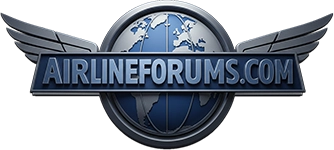Oh brother.......it just keeps getting deeper and deeper out there in USAPA-land.
Deep? We will hire Haber and Seham to kick Leonidas one more time. Here is your "deep" discussion of how they furloughed and took the pension to make it fly. We will counter with this for your "damages" mantra.
GESTATION PERIOD
US Airways was talking merger with America West well in advance of its second bankruptcy filing, but the pay, pension and retiree-benefit cutbacks of its current stint in Chapter 11 are what made the deal feasible, according to a regulatory filing by America West.
The filing, to the Securities and Exchange Commission, makes clear that even though the deal was concluded within a month after initial press reports that the two airlines were in negotiations, its origins go back as far as February 2004. The filing also revises downward, to 39% from 45%, the share of the merged company's equity that will go to current America West shareholders, who are being asked to approve the merger.
In a registration statement describing merger terms to these shareholders, America West gives this account of how the deal came about:
THE FIRST DISCUSSIONS resulted from the troubles US Airways faced after emerging from its first bankruptcy, on Mar. 31, 2003. The carrier reduced its highest-in-the-industry costs considerably during an eight-month reorganization but overestimated its post-bankruptcy revenues and was surprised, then as now, by fuel price increases. Casting about for ways to avoid another Chapter 11 filing, US Airways looked at an America West merger as one alternative.
For its part, America West's management "believed that consolidation in the industry was inevitable, and was interested in the potential benefits of combining the airlines' complementary east-west route networks." But the talks ended in July 2004 when both carriers concluded that it wouldn't work due to "a number of issues, including . . . labor, pension and benefit costs." Two months later, US Airways went back into Chapter 11 bankruptcy protection.
In December 2004, assuming it would reduce its labor costs further, US Airways set out to investigate deals with other companies. US Airways/America West talks were reopened in January, this time figuring that their labor costs would turn out to be "similar," and that bankruptcy would increase the ability to combine networks more efficiently and cost effectively than before. US Airways' prospective post-reorganization liquidity also was a plus.
Enter the committees and the consultants. The board of America West's parent, America West Holdings, was briefed on the renewed talks on Jan. 20 as part of a strategy presentation. The strategy and finance committee of US Airways Holdings' board was advised late in February. Legal, financial and labor analyses followed in March, with the key finding that US Airways' labor costs no longer made a merger impractical.
The pace of negotiations quickened in April. The airlines and their advisers--The Seabury Group for US Airways and Greenhill & Co. for America West, mainly--met and teleconferenced often on such issues as the ratio for converting America West shares into shares of the new company (shares of the old US Airways will be worthless as part of the reorganization), the need for additional equity investment and the composition of the new company's board. The airlines met with potential investors and with the Air Transportation Stabilization Board, which administers government-guaranteed loans to both carriers and has veto power over the merger.
Word of the merger talks leaked out midway through the month. On Apr. 19, the day the full board of US Airways met and reviewed the negotiations, The Wall Street Journal posted a web site report, and a print version the next day. On Apr. 22 the carriers confirmed it.
In May the negotiators settled on $375 million as the minimum new investment needed for the merger to proceed. By then, the airlines had lined up $350 million from four entities--Eastshore Holdings, PAR Investment Partners, ACE Aviation Holdings and Peninsula Investment Partners, with $125 million, $100 million, $75 million and $50 million, respectively. The total reached $500 million in a deal concluded after the merger was announced in mid-May, by which Wellington Management Co. will invest $150 million on behalf of funds it manages.
The Wellington investment apparently accounts for the reduced percentage ownership in the new company for America West shareholders. In the mid-May announcement, the division was said to be 45% to America West shareholders, 41% to new equity investors and 14% to some of US Airways' creditors. Now, the new investors will get 49%, America West shareholders 39% and the creditors 12%.
THE MERGER CLEARED an important hurdle June 23, when the Justice Dept. said it will have no objections based on antitrust laws. This was no surprise--there was very little overlap in the route networks. They will face competition from Southwest nonstops on Philadelphia-Phoenix and Philadelphia-Las Vegas, two of their four hub-to-hub markets. On Charlotte-Las Vegas, AirTran Airways and Independence Air offer one-stop service. Only on Charlotte-Phoenix will competition be limited to legacy carriers' one-stops.
Article Comments
AVIATION WEEK Copyright 2011, The McGraw-Hill Companies, Inc. All Rights Reserved.
Terms of Use | Privacy Notice | Contact Us| Subscribe| Sitemap
